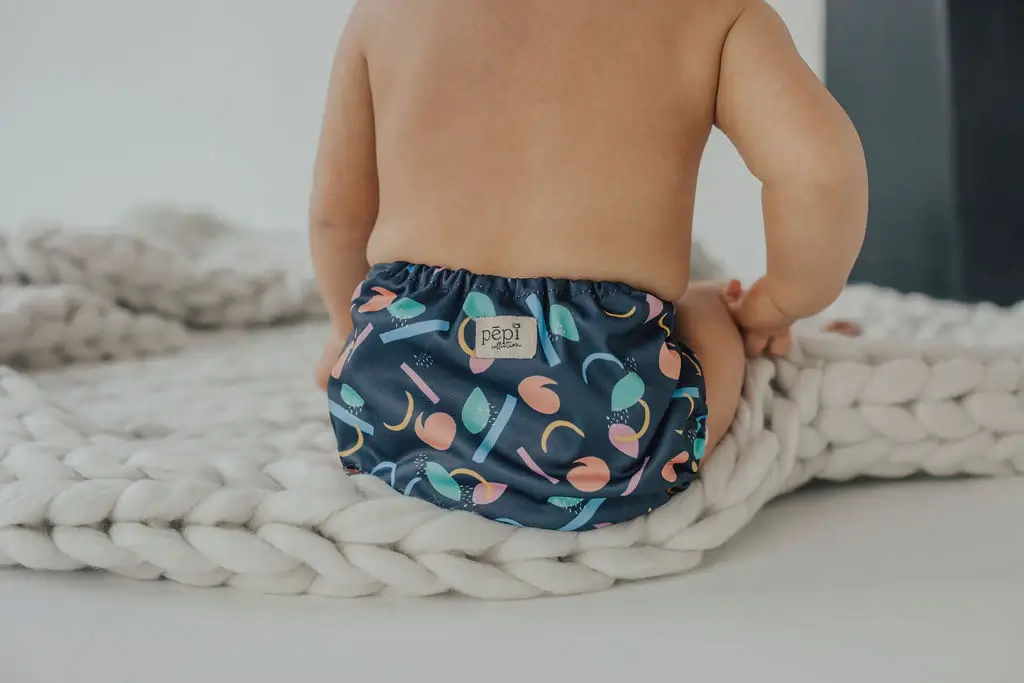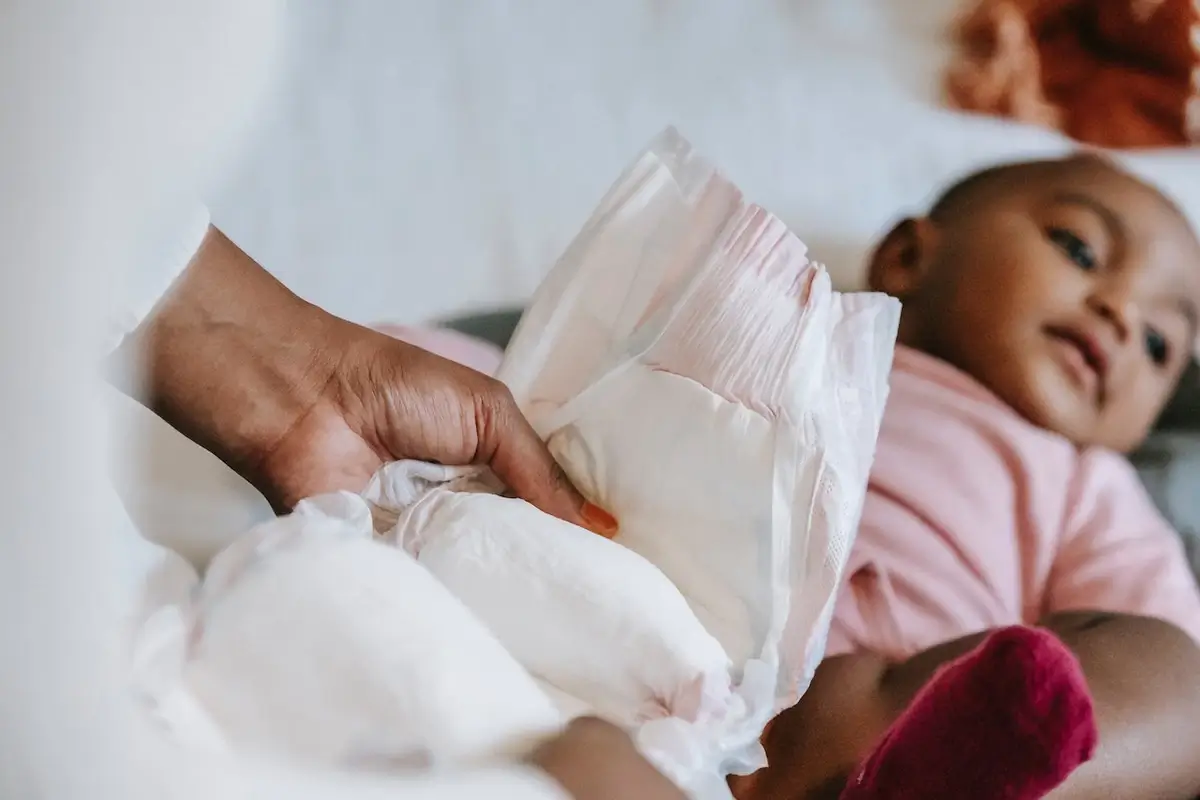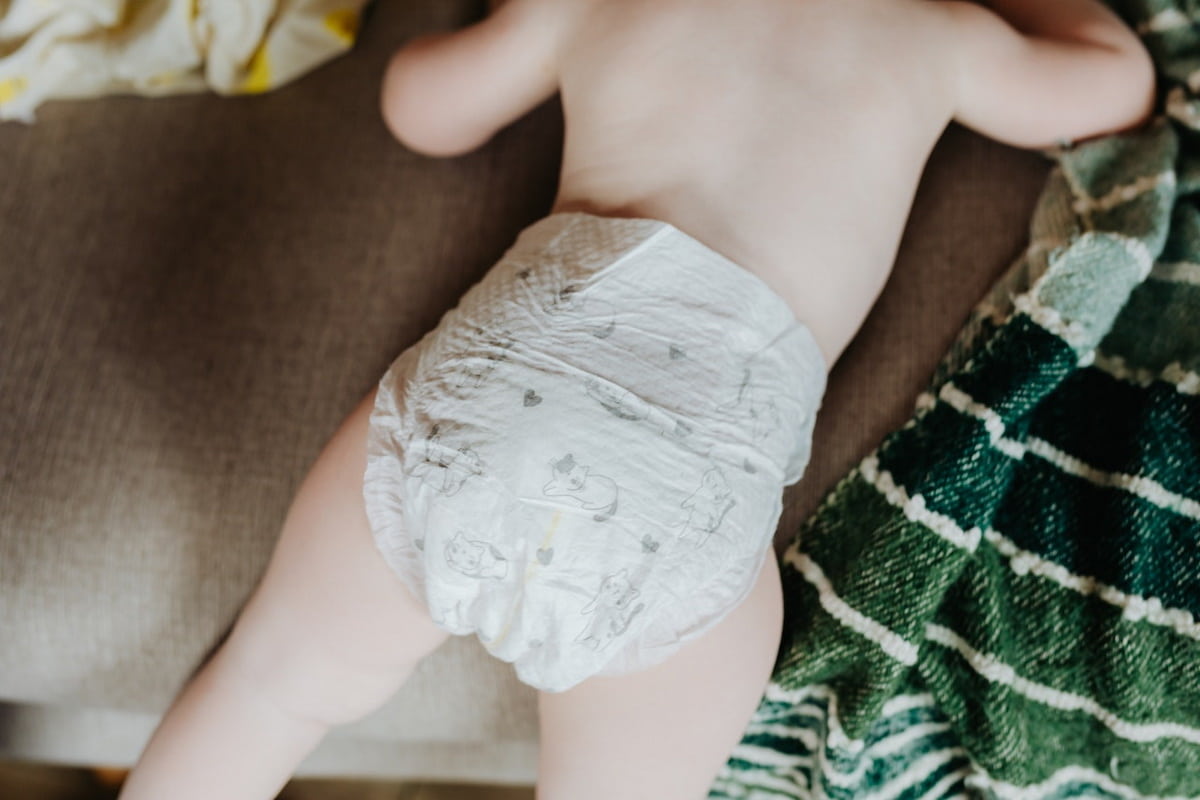Hey, hey, hey, parents and diaper aficionados! Buckle up because you’re about to get the 411 on the world’s most necessary yet unglamorous accessory: the diaper. We’re talking fun facts about diapers here! Whether you’re Team Cloth, Team Disposable, or even Team “I’ll just let Grandma deal with it,” this article’s got something for everyone.
Grab your baby wipes and let’s dive into this absorbing (see what I did there?) subject! Ready? Good, because once you’re in, you’re waist-deep!
1. The Ancient Origins of Diapers
So, you think diapers are a modern convenience? Think again. These life-savers have been around for ages. Yep, even the ancient Egyptians were in on the game. They used soft papyrus leaves wrapped around babies’ little bums. Sounds scratchy!
But wait, there’s more. When in Rome, do as the Romans do, right? Well, Roman parents used linen pieces soaked in water or oils. Nice and soft, eh?
2. The Birth of the Modern Disposable Diaper
Flash forward to the 20th century. Flapper dresses, jazz music, and the birth of the disposable diaper! In 1948, we saw the first semblance of a disposable, thanks to Johnson & Johnson and their “Chux.”
However, it was in 1961 that Pampers revolutionized the game. They introduced a disposable diaper full of absorbent gelling material. You know, the stuff that magically turns liquid into gel. Diapering was never the same!
3. How Many Diapers a Baby Goes Through in a Lifetime
Hold onto your diaper bags because this fact will blow your mind. An average baby goes through a staggering 5,000 to 8,000 diapers before they graduate to underwear! Let that sink in for a second.
Breaking it down, that’s about eight diapers a day in the first year alone. We’re talking one for every coffee you’ll need just to make it through the day!
4. Cloth vs. Disposable: The Age-old Debate
The rivalry between cloth and disposable diapers has been around almost as long as, well, diapers themselves. Cloth fans tout their eco-friendly nature and the cash savings. You buy ’em once, and you’re set until Junior outgrows them.
But disposable enthusiasts argue: “Convenience, people!” No washing, no folding, and definitely no fuss. Just toss them and forget them. But, did you know cloth diapers have evolved? You’ve got modern versions with snaps and waterproof linings. Almost like disposables, but without the guilt!
5. The Brand Wars: Pampers vs. Huggies vs. Luvs
Ah, the Cola Wars of the diaper world. Pampers, Huggies, and Luvs have been duking it out for decades to win the battle of the bums. Pampers claims to be the softest; Huggies says they’re the most absorbent; and Luvs? They’re for the budget-conscious parent who still wants performance.
The rivalry is so heated, each brand has its own loyal following. You’ve got the Pampers Parents, the Huggies Heroes, and the Luvs Loyalists. It’s like a diaper version of Twilight’s Team Edward and Team Jacob.
6. Why They’re Called “Diapers”
Ever wonder why they’re called “diapers”? It’s actually quite poetic. The term originates from the Greek word ‘diaspera,’ meaning a white, pure, and well, absorbent fabric. It then transitioned through Old French as ‘diapre,’ which referred to richly decorated cloth.
By the time it reached Middle English, ‘diaper’ was the term for a patterned cloth. Eventually, it morphed into what we use today. Talk about a journey, huh?
7. Why Luvs Diapers Changed Their Design in 1985 and 1991
The 1980s and 1990s were big for pop culture, but guess what? They were also big for Luvs diapers. In 1985, Luvs introduced “deluxe” features like an hourglass design and water-resistant tape closures. Then, come 1991, they switched to a “refastenable” stretch tab, a move lauded by parents everywhere.
Why all the changes? Luvs was all about staying ahead in the brand wars. And hey, they wanted to show they were listening to parents! It was no longer just about absorption; it was about fit, comfort, and ease of use.
8. The Science of Diaper Absorption
Oh, the science behind these everyday marvels! Diaper absorption is all about the super-absorbent polymer (SAP) magic. These tiny granules can hold about 300 times their weight in liquid! Originally designed for agricultural uses, SAP made its diaper debut in the ’80s.
This polymer goes from being little dry specks to big, fluffy, jellied masses that trap the wetness. In simpler terms, it’s the closest thing we’ve got to baby bum alchemy.
https://youtu.be/mXOhl_bi6y0?si=64m2qP-b3XCmzZs1
9. Environmental Impact of Disposable Diapers
Let’s get real for a second. Disposable diapers take about 500 years to decompose. Yep, you heard that right. Your baby’s tiny tushie is leaving a not-so-tiny footprint. In the U.S. alone, about 20 billion disposable diapers are tossed each year, making up more than 3.5 million tons of waste.
But there’s hope. Biodegradable options and diaper recycling services are starting to make waves. Because, let’s face it, nobody wants their legacy to be a landfill.
10. How Adult Diapers Became a Thing
Adult diapers, though less talked about, are a booming market. They came into existence primarily for medical reasons, helping those with incontinence issues maintain a sense of normalcy. But guess what? They’re not just for seniors or medical conditions anymore.
Many adults use them for convenience during long trips or even extreme sporting events. Oh yeah, there are marathon runners out there who don’t want to waste a second on potty breaks!
11. Diapers in Space: The Astronaut Edition
Alright, buckle up because we’re shooting for the stars with this one. Diapers in space! Astronauts wear what are called “Maximum Absorbency Garments” (MAGs). These adult-sized diapers are worn during takeoffs, landings, and spacewalks.
And here’s where it gets interesting: NASA’s diaper technology has trickled down to Earth. Many of the advancements in absorption were first trialed in space. Because, hey, if it’s good enough for an astronaut…

Image source: twitter.com
12. Diaper Sizes: From Preemie to Adult
The world of diapers isn’t one-size-fits-all. We’ve got everything from preemie diapers weighing in at less than a pound to adult sizes that could give XXL a run for its money. Newborn sizes typically go up to 10 pounds, and then you graduate into the numbered sizes, climbing all the way up to size 7 for kiddos over 41 pounds.
And for our grown-up friends, adult diapers come in a whole range of sizes and absorbencies. So whether you’re tiny or towering, there’s a snug fit waiting for you.
13. The Rise of Designer Diapers
Once upon a time, diapers were all function and no fashion. But today, welcome to the era of designer diapers. Brands like Honest Company are cashing in on the millennial desire for diapers that are Instagrammable. Think floral prints, animal designs, and even seasonal themes.
Gone are the days of plain white diapers hidden away under clothes. Today’s tots are rocking their diapers like couture. It’s a runway show at every changing table!

Image source: ecomamaandbaby.co.uk
14. Celebrities Who’ve Invested in Diaper Companies
If you think the diaper industry is strictly baby business, think again. Celebrities like Jessica Alba and Kristen Bell have jumped into the fray. Alba co-founded Honest Company, while Bell is co-founder of Hello Bello, another eco-friendly diaper brand.
And they’re not just slapping their name on the product; they’re actively involved. Because when it comes to baby bottoms, Hollywood’s got skin in the game, too.
15. How Many Diapers Are Sold Globally Each Year
Ready for a mind-blowing fun fact about diapers? Approximately 440 billion diapers are sold globally each year. To put that in perspective, if you lined them up end to end, they would stretch all the way to the moon and back. Several times!
This market is not just baby steps; it’s leaps and bounds. With numbers like that, it’s easy to see why so many companies want to dive into the diaper business.
16. The Most Expensive Diaper Ever Sold
Okay, folks, get ready to clutch your pearls—or should I say your wallets? The most expensive diaper ever sold was a designer creation blinged out with diamonds and sapphires. This ritzy nappy went for a jaw-dropping $10,000! Trust me, this diaper wasn’t doing any dirty work; it was all for show.
Talk about taking the phrase “spoiling your child” to a whole new level, am I right?
17. Fun Fact About Luvs Diapers: The Famous Blue Line Indicator
Ah, Luvs diapers. Not only do they have history, but they also have innovation to brag about. Enter the famous Blue Line Indicator. This little marvel turns blue to let you know it’s changing time, saving you the good ol’ sniff test.
You know, it’s the kind of invention that makes you say, “Why didn’t I think of that?” And it’s saved countless parents from peeking into the abyss.
18. Diapers and the Movies: Famous Film Moments
From “Three Men and a Baby” to “Boss Baby,” diapers have had their fair share of screen time. Whether it’s a comedy sketch around a disastrous diaper change or a poignant moment between parent and child, diapers are the unsung heroes of Hollywood.
My personal favorite? The iconic diaper-changing scene from “Look Who’s Talking.” It’s cinematic history, people!
19. Strange Uses of Diapers That You Wouldn’t Expect
Diapers are not just for the derrière. They’ve been used for cleaning up spills due to their super-absorbent nature. Some gardeners even use the absorbent material to keep soil moist! And let’s not forget their use in emergency situations like leaks and floods.
And get this, some artists use diapers to give texture to their paintings. So, it turns out diapers are more versatile than most politicians!
20. Global Diaper Traditions: How the World Wraps Its Babies
You’d be surprised how the concept of a diaper varies globally. In some parts of Africa, babies are carried in slings with their bottoms exposed for easy, natural elimination. Meanwhile, in cold regions like Siberia, fur is used for both warmth and absorption.
And let’s not forget “Elimination Communication,” a practice in parts of Asia where parents read baby cues to know when it’s potty time. No diaper needed!

William Fortunato / Pexels
FAQ
What are 10 interesting facts about diapers?
- Ancient Butts Welcome: Diapers have been around longer than your great-great-great-grandma’s meatloaf recipe. We’re talking way back: ancient civilizations used various forms of them. The Ancient Egyptians, for instance, used papyrus and linen. A soft touch for a royal tush, no doubt!
- Rags to Riches: The first mass-produced disposable diaper appeared in the 1940s. Before then, people relied on cloth diapers which were basically glorified tea towels. Imagine having to wash those babies by hand! Let’s have a moment of silence for our laundry-doing ancestors.
- SAP – Not Just For Sappy Shows: Modern diapers employ the magic of Super Absorbent Polymer (SAP), which can hold many times its weight in liquid. It’s like the black hole of baby waste. One gram of this stuff can absorb up to 300 grams of liquid. Talk about heavy lifting!
- Wetness Indicator, or Baby Mood Ring: Some modern diapers have a wetness indicator that changes color when it’s time for a change. This isn’t just for parents, but it’s also to help whoever lost a bet and is on diaper duty. No more guesswork, or sniff tests. Hallelujah!
- Diaper Derby: Believe it or not, there’s such a thing as a diaper-changing contest. Yes, the Diaper Derby is a thing, people! Parents race to see who can change a diaper the fastest. It’s like the Olympics, but with more wipes and less dignity.
- One Size Does NOT Fit All: Diapers come in various sizes, from Preemie to size 6. There’s even a size 7 for those toddlers who are eating their Wheaties and growing like Jack’s beanstalk.
- Environmental Oopsy: The average baby goes through about 5,000 to 8,000 diapers before being potty-trained. That’s a mountain of diapers, and unfortunately, most are not biodegradable. New eco-friendly options are coming onto the market, though. So there’s hope for Mother Earth yet!
- Waddle, Waddle: Ever wonder why babies have that adorable waddle? Thank those cushy diapers. They actually affect how a baby walks. Or should I say… waddles? So it’s not just for cuteness, it’s a side effect of having a cloud strapped to their bottoms.
- Swim-tastic: Swim diapers are not designed to be absorbent but to contain solids. If they absorbed liquid, your baby would turn into an anchor in the swimming pool. Not a good look, even with those arm floaties.
- Celebri-diapers: Designer diapers are a thing. You heard it right! Brands have collaborated with celebrities and designers to create haute couture for baby butts. Does your baby need leopard print diapers to match your purse? Absolutely, dah-ling!
What is the oldest diaper?
When we’re talking ancient artifacts, the oldest known diaper was discovered in the Austrian Alps, dated back to the 16th century. This baby relic was made of linen and looked more like an unfortunate form of medieval underwear than anything else. But for the true origin of diapers, we go way back to the Egyptians and their linen wraps. They were the “OG” (Original Gauze) of the diaper world.
Why are they called diapers?
Ah, etymology! The word “diaper” originally referred to a type of fabric rather than the baby bottom accessory we all know and love. It comes from the Greek “diasperin,” which means “across” and “aspros,” which means white. The word evolved through Old French and Middle English to the word we know today. Originally, it was white fabric woven in small, repetitive geometric shapes. Now it’s synonymous with “baby butt lifesaver.”
What are positive things about diapers?
Where to start? Well, they’re the ultimate in convenience. No need to run to a restroom every time little Timmy has to go. They’re also leak-resistant thanks to modern polymers, protecting car seats, carpets, and parental dignity. Wetness indicators and size varieties have made the whole operation practically foolproof. And let’s not forget: they make for adorable baby butts. Seriously, have you seen a baby in a diaper commercial? They should all win Oscars for “Best Booty in a Supporting Role.”
Who was the first to use diapers?
It’s hard to pinpoint the first person (or should I say, the first baby) to use diapers. But civilizations like Ancient Egypt, Rome, and the Inca empire had their own versions of early nappies made from various local materials like papyrus, wool, and even animal skins. I shudder at the thought of diaper rash in those times.
How long can diapers hold pee?
Modern diapers can hold quite a bit thanks to Super Absorbent Polymer (SAP), but “holding” and “comfortable for baby” are two different things. A good rule of thumb is to change a newborn’s diaper every 2-3 hours, and an older baby’s diaper every 3-4 hours. Some overnight diapers claim to last up to 12 hours, but let’s just say they are the sumo wrestlers of the diaper world: they can hold a lot, but you wouldn’t want to challenge them.
Who invented diapers and why?
The first disposable diaper was invented by Marion Donovan in the 1940s. She was a mother tired of the constant drudgery that came with cloth diapers (and who could blame her?). So she took a shower curtain and created a waterproof diaper cover. Her design was the blueprint for the disposable diapers we know today.
Why are diapers called Pampers?
Pampers is actually a brand name, like Kleenex for tissues. Created by Procter & Gamble, the name “Pampers” was chosen to capitalize on the idea of pampering your child because nothing says “luxury” like catching poop in style!
When did diapers become popular?
Disposable diapers exploded in popularity in the 1960s and 1970s with the advent of brands like Pampers and Huggies. This was the “Diaper Revolution,” akin to the Beatles invasion but with less screaming and more cooing.
How many diapers does a baby use in a lifetime?
Strap in for some diaper math! On average, a baby uses about 5,000 to 8,000 diapers before they’re potty trained. That’s a lot of stink bombs diffused and a whole new meaning to the term “loaded.”





